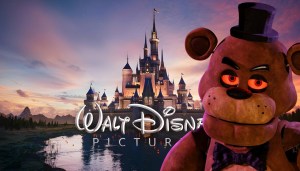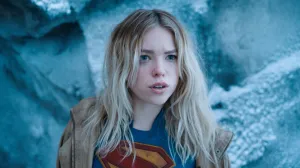Quite a few franchises find what works the first time out the gate and stick with that, all the while expanding the world. Star Wars, for instance, doesn’t have any installments that serve as much of a departure from Star Wars: A New Hope. They’re all sci-fi action movies, full stop. However, the longer a franchise runs, the more likely it is to attempt a departure from the schematic to avoid playing as redundant (and, inevitably, less profitable). This is as applicable to horror as it is to action, adventure, and similar genres. The only outlier seems to be comedy. When audiences paid to laugh at something, then did laugh at that thing, they don’t want a sequel that then makes them cry throughout.
Videos by ComicBook.com
What follows are seven franchises that have had at least one installment that substantially departed from the tone and genre of the franchise progenitor. Did they always work? Not quite, but just as often these tonal departures helped keep the overarching IP alive.
1) M3GAN

The most recent major departure from a franchise debut, the sci-fi action movie M3GAN 2.0 was a substantial failure for Blumhouse. Of all the entries listed here, the genre change undoubtedly worked out the worst for M3GAN.
Domestically, M3GAN 2.0 netted in total about as much as the first film made in two days. It also made about a sixth of its predecessor’s overseas tally. It will likely become something of a cult film but the fact remains that people wanted a M3GAN sequel to have at least some horror in it, if they wanted a M3GAN sequel at all.
2) Alien

Remember how the title of the piece says the genre departures made three of these cinematic sagas better? We’re counting Alien or, more specifically, Aliens, as one of the three.
Few sequels are as respected as James Cameron’s Aliens, which went from straightforward horror to action-horror yet retained fans of the original film as well as bringing new fans into the fold. It is one of the very best action films ever made and, even if you do prefer Ridley Scott’s original, there’s no doubt you still rank Cameron’s film second.
3) Texas Chainsaw Massacre

The original The Texas Chain Saw Massacre isn’t just a horror film, it’s one of the most frightening horror films ever made. To this day it holds an immense power and aura of realism.
But the thing is, director Tobe Hooper saw it as a work containing an undertone of humor. Neither the audience nor the critics detected that, so, 12 years after the release of the first film, Hooper came back to create another Leatherface movie with the black humor turned way up. Is it as powerful a film as the original? No. However, it was the type of movie that was born to generate a divisive reaction. One that, in time, has rightly towards seeing it as the fantastic genre-blender it is. Even after seven subsequent movies, The Texas Chainsaw Massacre 2 remains the greatest follow up to the original TCM.
4) Riddick

The trio of Riddick live-action movies are not the only time we’ll see Vin Diesel here on this list. However, the result of the change in franchise tone and genre worked much better the other time than it did here.
The first Riddick movie, Pitch Black, is more of a (literally) dark horror movie focused on those around Riddick. But then Diesel’s character ended up being the standout, so we got The Chronicles of Riddick a few years later, which retains absolutely none of its franchise’s horror leanings (though they did somewhat return in the subsequent Riddick). The result was an overbudgeted financial flop with next to no personality. A space epic that seems as though it’s trying to imitate far better and more enjoyable space operas.
5) Evil Dead

Sam Raimi’s The Evil Dead is undoubtedly a horror classic. It is the ultimate cabin in the woods scary movie.
But, without a doubt, Evil Dead II is better. It has some of the possession horror elements present in the original film, but it makes that and everything else in its past completely goofy. It also let Bruce Campbell be his rubber-faced self, and the Ash Williams we see here was the one we continued to see in Army of Darkness and Ash vs. Evil Dead, not the Ash of the original film.
6) Fast & Furious

While the Fast & Furious movies continue to incorporate fast cars and even the odd street racing sequence here or there, it hasn’t really focused on that element since the first four installments. Then, with Fast Five, it took the theft plotline of the original film and shined a brighter light on it, effectively turning the saga into a series of heist films midway through.
It really worked for Fast Five, both in terms of critical reception, audience reception, and box office numbers. The franchise was fledgling after the mostly forgettable fourth entry which, in spite of getting the gang back together, didn’t give them anything interesting to do. Fast Five solved that problem, and as the events of Fast X proved, it’s still an integral chapter in the franchise’s history.
7) Jurassic Park

For the most part, the Jurassic Park films have thrived, and continued to thrive, on the back of three genres. Adventure, science fiction, and pinches of horror, essentially in that order. The original Jurassic Park is the definitive adventure film. It feels like a rollercoaster ride that lasts just a hair over two hours. For the most part, The Lost World: Jurassic Park stuck to that formula, but with the horror element slightly upped. Jurassic Park III and Jurassic World (not to mention Jurassic World Dominion and Jurassic World Rebirth) went back to that adventure with pinches of horror formula.
The one true outlier is the latter half of Jurassic World: Fallen Kingdom, a film that feels as though it doesn’t even adhere to a three-act structure. This is partly due to just how different the manor-set second half feels from the island-based opening half. The latter half is a full on single-locale slasher film, just with a human-designed dinosaur over a man in a hockey mask. It was a compelling finale, but not enough to keep Fallen Kingdom from being as good as Jurassic Park or Jurassic World.









